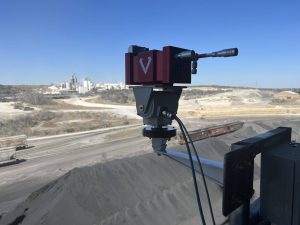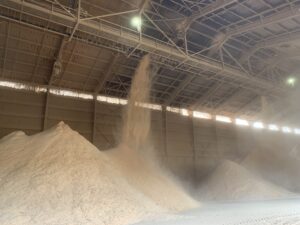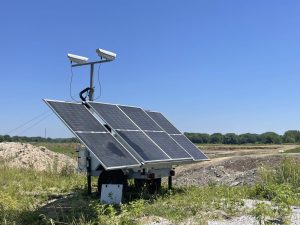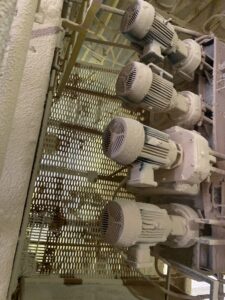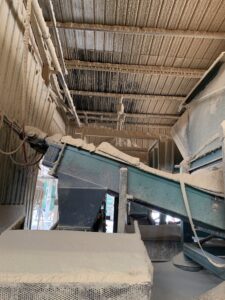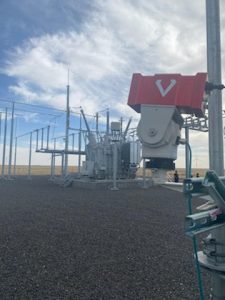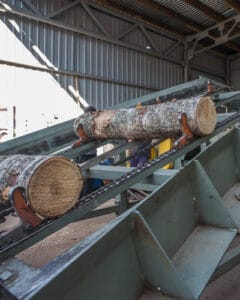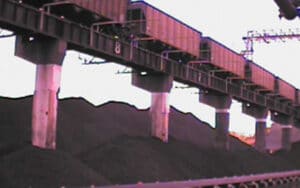Early Fire Detection Solutions
Fire is a devastating force that can cause immense damage to lives and property. Detecting a fire early on is crucial for effective firefighting and reducing the potential for harm. Thermal cameras have emerged as a powerful tool in fire detection and prevention, allowing us to identify and respond to potential fire hazards before they escalate. In this blog post, we will explore how thermal cameras can be used to detect fire before combustion, answering questions and providing valuable insights into fire prevention and safety.
What thermal camera is right for this application?
How does alarming integrate into other systems?
Will the system still work in highly contaminated [dusty] areas?
Understanding Thermal Imaging Technology: Although warehouses and storage areas are typically equipped with fire alarms and fire-fighting systems, these systems only initiate when a fire already exists. Thermal imaging helps to detect hot spots before a fire occurs so that the necessary measures can be taken. Unlike traditional cameras that rely on visible light, thermal cameras detect the heat emitted by objects, making them ideal for detecting thermal anomalies associated with fire.
Identifying Early Warning Signs: Many types of material are exothermic without exposure to an external stimulus. The internal temperature of the material can increase to the point where it begins to burn spontaneously. The resulting fire and intense heat can ignite nearby material. If not caught in time, an entire warehouse or storage area and the product contained in it can be destroyed. Thermal cameras can detect subtle changes in temperature and identify potential fire hazards at an early stage. With continuous monitoring, thermal cameras can identify hotspots, overheating machinery, electrical malfunctions, or other heat sources that may indicate a fire risk. This analysis allows operators to be able to respond swiftly and mitigate potential fire incidents.
In this post, we address some of the commonly asked questions about thermal monitoring to prevent fires in your process.
Common applications: Bulk storage, Landfill monitoring, Coal belt monitoring, Industrial laundry, OSB production, Planer rooms, Wood processing, Paper production
➡️ How does the alarming feature integrate into other systems?
When a thermal camera detects a significant temperature increase or abnormal heat pattern, it can trigger an alert, notifying operators or automatically activating fire suppression systems. ViperVision software supports communication standards for connection to the plant control system including OPC, Modbus, Allen-Bradley, or Siemens systems, as well as physical I/Os such as relays and analog outputs. It can send a discrete signal into your system through external I/O devices or the camera’s built-in I/O. This integration enables rapid response, minimizing the time between fire detection and firefighting actions.
➡️ Will the system still work in highly contaminated areas?
Advanced thermal cameras employ algorithms that can mitigate environmental challenges, providing reliable fire detection even in adverse conditions. The thermal cameras we use are designed for industrial settings and have an IP66 rating. We often install these cameras in our ViperVenom camera enclosures which provide additional environmental protection. Options such as a front air knife or air intensifier are added for extremely dusty environments in order to keep the front window clean and free of contamination. Regular maintenance and calibration of the cameras are also essential to ensure accurate readings.
➡️ What thermal camera is right for this application?
To verify a thermal camera will achieve accurate measurement in a setting, several factors must be considered, such as spot size ratio, distance to the target area, camera field of view (FOV), camera resolution, and camera sensitivity. Viper engineers have extensive experience and training to make the best recommendations. One that we commonly integrate into Viper Early Fire Detection systems is the FLIR A50/A70. The FLIR A400/700 is capable of measuring higher temperatures, so this would be the camera of choice in extreme settings.
➡️ How is ViperVision software licensed?
We offer a perpetual license or annual renewal, as well as the option to incorporate the entire system into a HaaS (Hardware as a Service) contract. Benefits of annual renewal and HaaS include software updates since the last renewal date. Review software packages here.
➡️ What does the Viper Early Fire Detection system cost?
The system is built for your specific needs (i.e. number of cameras required to monitor the area or process, additional camera protection, etc.). A starting point for a typical system is $7k-$10k. This is a good time to mention the HaaS option. The 3-year renewable contract includes annual on-site maintenance, critical spares in consignment, and ViperVision software upgrades.
Detecting fires before combustion is paramount for effective fire prevention and safety. A system of thermal cameras equipped with advanced imaging technology paired with ViperVision software is a powerful tool to identify potential fire hazards at an early stage and prevent fires in your process.
➡️ Can I get more details?
Yes, we have a recorded webinar! Here’s a link to watch the recording on YouTube. You can also download a datasheet. We have one for general Early Fire Detection and another specific to Early Fire Detection in the wood products industry. You can also contact us!
Hardware as a Service (HaaS) | Lease | Purchase | Rental | |
Upfront costs | $ | $ | $$$ | $$ |
Monthly fee | Yes | Yes | N/A | Varies |
Equipment ownership | Viper | Viper initially, then transitions to Customer | Customer | Viper |
Contract term | 3-year (renewable) | 2, 3, or 5 year | Paid with order | Weekly or Monthly |
Annual on-site routine maintenance & calibration checks | Yes | Optional | Optional | N/A |
Quarterly service plan | Yes | Optional | Optional | N/A |
ViperVision software upgrades | Yes | Optional | Optional | N/A |
Critical spares in consignment | Yes | Optional | Optional | N/A |

